Black Nova Scotians
Black Nova Scotians or African Nova Scotians are Black Canadians whose ancestors primarily date back to the Colonial United States as slaves or freemen, and later arrived in Nova Scotia, Canada during the 18th and early 19th centuries.[5] As of the 2016 Census of Canada, 21,915 black people live in Nova Scotia,[2] most in Halifax.[6] Since the 1950s, numerous Black Nova Scotians have migrated to Toronto for its larger range of opportunities.[3][4] Before the immigration reforms of the 1960s, Black Nova Scotians formed 37% of the total Black Canadian population.[7]
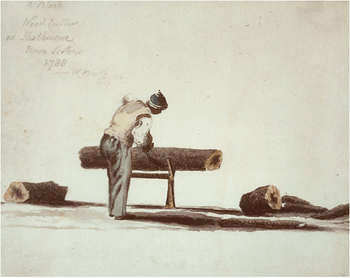 The earliest known image of a black Nova Scotian, in British Canada, in 1788. He was a wood cutter in Shelburne, Province of Nova Scotia[1] | |
| Total population | |
|---|---|
| 21,915 2.4% of Nova Scotia's population (2016)[2] | |
| Regions with significant populations | |
| Languages | |
| African Nova Scotian English, Canadian English, Canadian French | |
| Religion | |
| Christianity (Baptist) and others | |
| Related ethnic groups | |
| African Americans, Black Canadians, Sierra Leone Creole people |
The first black person in Nova Scotia was recorded among the founders of Port Royal in 1604. West Africans were brought as slaves both in early British and French Colonies in the 17th and 18th Centuries. Many came as slaves, primarily from the French West Indies to Nova Scotia during the founding of Louisbourg. The second major migration of blacks to Nova Scotia happened following the American Revolution, when the British evacuated thousands of slaves who had fled to their lines during the war. They were promised freedom by the Crown if they joined British lines, and some 3,000 African Americans were resettled in Nova Scotia after the war, where they were known as Black Loyalists. There was also the forced migration of the Jamaican Maroons in 1796, although a third of the Loyalists and nearly all of the Maroons left to found Freetown in Sierra Leone four years later.
In this period, educational opportunities began to develop with the establishment of Society for the Propagation of the Gospel in Foreign Parts (Bray Schools) in Nova Scotia.[8][9][10] The decline of slavery in Nova Scotia happened in large part by local judicial decisions in keeping with those by the British courts of the late 18th century.
The next major migration of blacks happened during the War of 1812, again with African Americans escaping slavery in the United States. Many came after having gained passage and freedom on British ships. The British issued a proclamation in the South promising freedom and land to those who wanted to join them. Creation of institutions such as the Royal Acadian School and the African Baptist Church in Halifax, founded in 1832, opened opportunities for Black Canadians. During the years before the American Civil War, an estimated ten to thirty thousand African Americans migrated to Canada, mostly as individual or small family groups; many settled in Ontario.
In the 20th century, Black Nova Scotians organized for civil rights, establishing such groups as the Nova Scotia Association for the Advancement of Coloured People, the Nova Scotia Human Rights Commission, the Black United Front, and the Black Cultural Centre for Nova Scotia. In the 21st century, the government and grassroots groups have initiated actions in Nova Scotia to address past harm done to Black Nova Scotians, such as the Africville Apology, the Viola Desmond Pardon, and the restorative justice initiative for the Nova Scotia Home for Colored Children.
A significant number of Black Nova Scotians also have some indigenous heritage, due to historical intermarriage between Black and First Nations or Métis communities.[11] Such assertions began to emerge in the 2010s, most notably through the musical and documentary film project The Afro-Métis Nation.[12]
History
Black Nova Scotians by share of overall Black Canadian population:
| Year | Number of Black Canadians | Number of Black Nova Scotians | Percent of all Black Canadians living in Nova Scotia |
|---|---|---|---|
| 1881[13] | 21,394 | 7,062 | 33% |
| 1951[14] | 18,020 | 8,141 | 45% |
| 2016[15] | 1,198,545 | 21,910 | 2% |
17th century
Port Royal
The first recorded black person in Canada was Mathieu da Costa. He arrived in Nova Scotia sometime between 1605 and 1608 as a translator for the French explorer Pierre Dugua, Sieur de Monts. The first known black person to live in Canada was a slave from Madagascar named Olivier Le Jeune (who may have been of partial Malay ancestry).
18th century
Louisbourg
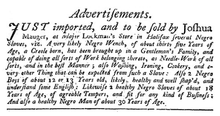
Of the 10,000 French living at Louisbourg (1713–1760) and on the rest of Ile Royale, 216 were African-descended slaves.[17][18][19][20] According to historian Kenneth Donovan, slaves on Ile Royal worked as "servants, gardeners, bakers, tavern keepers, stone masons, musicians, laundry workers, soldiers, sailors, fishermen, hospital workers, ferry men, executioners and nursemaids."[21] More than 90 per cent of the slaves were blacks from the French West Indies, which included Saint-Domingue, the chief sugar colony, and Guadeloupe.[22]
Halifax
Among the founders recorded for Halifax, were 17 free black people. By 1767, there were 54 Blacks living in Halifax.[23][24] When Halifax, Nova Scotia was established (1749), some British people brought slaves to the city. For example, shipowner and trader Joshua Mauger sold slaves at auction there. A few newspaper advertisements were published for run-away slaves.[25][26]
The first Black community in Halifax was on Albemarle Street, which later became the site of the first school for Black students in Nova Scotia (1786).[27][28][29] The school for Black students was the only charitable school in Halifax for the next 26 years. Whites were not allowed to attend.[30][28][31][32][33][34][35]
Prior to 1799, 29 recorded Blacks were buried in the Old Burying Ground (Halifax, Nova Scotia), of which 12 of them were listed with both first and last names; seven of the graves are from the New England Planter migration (1763-1775); and 22 graves are from immediately following the arrival of the Black Loyalists in 1776.[36][37] Rev. John Breynton reported that in 1783, he baptized 40 Blacks and buried many because of disease.[28][38]
According to a 1783 report, 73 Blacks arrived in Halifax from New York.[39] Of the 4007 Blacks who came to Nova Scotia in 1783 as part of promised resettlement by the Crown, 69% (2775) were free, 35% (1423) were former British soldiers, and 31% (1232) were slaves of white Loyalists. While 41 former slaves were sent to Dartmouth, none were sent to Halifax.[40] 550 Jamaican Maroons lived in Halifax for four years (1796-1800); they were resettled in Freetown (now Sierra Leone).[41] A return in December 1816 indicates there were 155 Blacks who migrated to Halifax during the War of 1812.[42]
American Revolution
The British had promised slaves of rebels freedom if they joined their forces. Some arrived during the war in Nova Scotia as a result of the Underground Railroad. At the end of the American War of Independence, the British evacuated thousands of Black Loyalists, settling many in the British colony of Nova Scotia, Canada. Following Dunmore's Proclamation, the British authorities in American colonies had promised freedom to those slaves of the rebelling Americans, who escaped and made their way into British lines. Large numbers of enslaved people took advantage of this opportunity and they made their way over to the British side, as did a much smaller number of free people of color.
Approximately three thousand black Loyalists were evacuated by ship to Nova Scotia between April and November 1783, traveling on Navy vessels or British chartered private transports.[43] This group was made up largely of tradespeople and labourers. Many of these African Americans had roots mainly in such American states as Virginia, South Carolina, Georgia and Maryland.[44] Some came from Massachusetts, New Jersey and New York as well.[45] Many of these African-American settlers were recorded in the Book of Negroes.
In 1785 in Halifax, educational opportunities began to develop with the establishment of Society for the Propagation of the Gospel in Foreign Parts (Bray Schools).[8][9][46] In Halifax, for example, the first teacher was the "capable and serious Negroe woman'.[35] Initially, the school was in the Orphan House and had 36 Black children, six of whom were slaves. She was followed by Reverend William Furmage (d. 1793), Huntingdonian Missionary who was buried in the Old Burying Ground (Halifax, Nova Scotia).[47][48] After a year he was followed by Isaac Limerick.[35] Limerick moved the school and went into debt to maintain it. The next teacher was a white woman, Mrs. Deborah Clarke (1793-1809), followed by Mary Fitzgerald. The school was dissolved in 1814 (when the Royal Acadian School was established for Blacks and whites).[35] The next teacher was Daniel Gallagher, who held the position of schoolmaster for a long period. The school was in the Black community on Albemarle Street, where it served the people for decades under the son of Rev. Charles Inglis.[28][49]
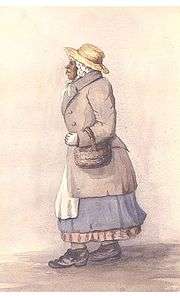
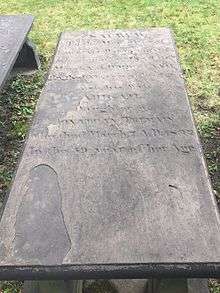 Lawrence Hartshorne, d. 1822, a Quaker who was the chief assistant of John Clarkson (abolitionist) in helping the Black Nova Scotian Settlers emigrate to Sierra Leone (1792) – Old Burying Ground (Halifax, Nova Scotia)[50][51]
Lawrence Hartshorne, d. 1822, a Quaker who was the chief assistant of John Clarkson (abolitionist) in helping the Black Nova Scotian Settlers emigrate to Sierra Leone (1792) – Old Burying Ground (Halifax, Nova Scotia)[50][51]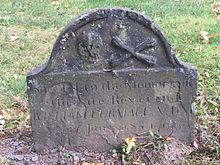 Reverend William Furmage, Huntingdonian Missionary to the Black Loyalists, established black school in Halifax[47][48]
Reverend William Furmage, Huntingdonian Missionary to the Black Loyalists, established black school in Halifax[47][48]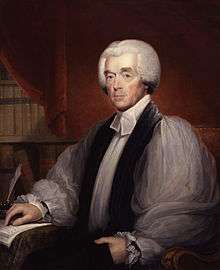 Charles Inglis, supported education for Black Nova Scotians
Charles Inglis, supported education for Black Nova Scotians
Black Pioneers
Many of the black Loyalists performed military service in the British Army, particularly as part of the only black regiment of the war, the Black Pioneers, while others served non-military roles. The soldiers of the Black Pioneers settled in Digby and were given small compensation in comparison to the white Loyalist soldiers.[52] Many of the blacks settled under the leadership of Stephen Blucke, a prominent black leader of the Black Pioneers. Historian Barry Moody has referred to Blucke as "the true founder of the Afro-Nova Scotian community."[53][54]
Birchtown
Blucke led the founding of Birchtown, Nova Scotia in 1783. The community was the largest settlement of Black Loyalists and was the largest free settlement of Africans in North America in the 18th century. The community was named after British Brigadier General Samuel Birch, an official who assisted in the evacuation of Black Loyalists from New York. (Also named after the general was a much smaller settlement of Black Loyalists in Guysborough County, Nova Scotia called Birchtown.[55]) The two other significant Black Loyalist communities established in Nova Scotia were Brindley town (present-day Jordantown) and Tracadie. Birchtown was located near the larger town of Shelburne, with a majority white population. Racial tensions in Shelburne erupted into the 1784 Shelburne riots, when white Loyalist residents drove black residents out of Shelburne and into Birchtown. In the years after the riot, Shelbourne county lost population due to economic factors, and at least half of the families in Birchtown abandoned the settlement and emigrated to Sierra Leone in 1792.[56] To accommodate these British subjects, the British government approved 16,000 pounds for the emigration, three times the total annual budget for Nova Scotia.[57] They were led to Sierra Leone by John Clarkson (abolitionist) and became known as the Nova Scotian Settlers.[58]
Tracadie
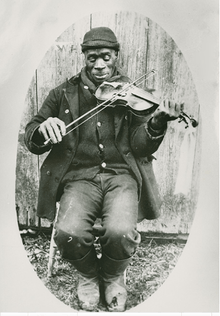
The other significant Black Loyalist settlement of Tracadie. Led by Thomas Brownspriggs, Black Nova Scotians who had settled at Chedabucto Bay behind the present-day village of Guysborough migrated to Tracadie (1787).[59] None of the blacks in eastern Nova Scotia migrated to Sierra Leone.
One of the Black Loyalist was Andrew Izard (c. 1755 – ?). He was a former slave of Ralph Izard in St. George, South Carolina. He worked on a rice plantation and grew up on Combahee. When he was young he was valued at 100 pounds. In 1778 Izard made his escape. During the American Revolution he worked for the British army in the wagonmaster-general's department. He was on one of the final ships to leave New York in 1783. He traveled on the Nisbett in November, which sailed to Port Mouton. The village burned to the ground in the spring of 1784 and he was transported to Guysborough. There he raised a family and still has descendants that live in the community.[60]
Education in the black community was initially advocated by Charles Inglis who sponsored the Protestant Society for the Propagation of the Gospel.[61] Some of the schoolmasters were: Thomas Brownspriggs (c.1788–1790) and Dempsey Jordan (1818–?).[62] There were 23 black families at Tracadie in 1808; by 1827 this number had increased to 30 or more.[63]
Abolishment of slavery, 1787–1812
While most blacks who arrived in Nova Scotia during the American Revolution were free, others were not.[64] Black slaves also arrived in Nova Scotia as the property of White American Loyalists.[65] In 1772, prior to the American Revolution, Britain outlawed the slave trade in the British Isles followed by the Knight v. Wedderburn decision in Scotland in 1778. This decision, in turn, influenced the colony of Nova Scotia.[66] In 1788, abolitionist James Drummond MacGregor from Pictou published the first anti-slavery literature in Canada and began purchasing slaves' freedom and chastising his colleagues in the Presbyterian church who owned slaves.[67] Historian Alan Wilson describes the document as "a landmark on the road to personal freedom in province and country."[68] Historian Robin Winks writes it is "the sharpest attack to come from a Canadian pen even into the 1840s; he had also brought about a public debate which soon reached the courts."[69] In 1790 John Burbidge freed his slaves.
Led by Richard John Uniacke, in 1787, 1789 and again on January 11, 1808, the Nova Scotian legislature refused to legalize slavery.[70][71] Similar to the judiciary in Massachusetts, two chief justices, Thomas Andrew Lumisden Strange (1790–1796) and Sampson Salter Blowers (1797–1832) waged "judicial war" in their efforts to free slaves from their owners in Nova Scotia.[72][73][74] They were held in high regard in the colony. Justice Alexander Croke (1801–1815) also impounded American slave ships during this time period (the most famous being the Liverpool Packet). During the war, Nova Scotian Sir William Winniett served as a crew on board HMS Tonnant in the effort to free slaves from America. (As the Governor of the Gold Coast, Winniett would later also work to end the slave trade in Western Africa.) By the end of the War of 1812 and the arrival of the Black Refugees, there were few slaves left in Nova Scotia.[63][75] (The Slave Trade Act outlawed the slave trade in the British Empire in 1807 and the Slavery Abolition Act of 1833 outlawed slavery all together.)
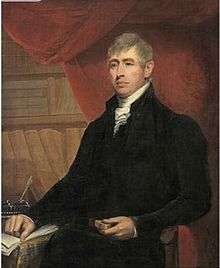 Abolitionist Richard John Uniacke, helped free Black Nova Scotian slaves
Abolitionist Richard John Uniacke, helped free Black Nova Scotian slaves Chief Justice Sampson Salter Blowers, freed Black Nova Scotian slaves
Chief Justice Sampson Salter Blowers, freed Black Nova Scotian slaves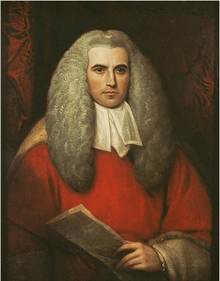 Chief Justice Thomas Andrew Lumisden Strange, freed Black Nova Scotian slaves
Chief Justice Thomas Andrew Lumisden Strange, freed Black Nova Scotian slaves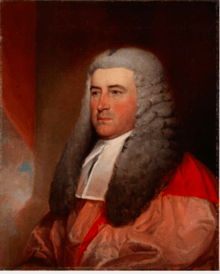 Sir Alexander Croke
Sir Alexander Croke James Drummond MacGregor Monument, Pictou, Nova Scotia
James Drummond MacGregor Monument, Pictou, Nova Scotia
Jamaican Maroons
According to one historian, on June 26, 1796, 543 men, women and children, Jamaican Maroons, were deported on board the ships Dover, Mary and Anne, from Jamaica after being defeated in an uprising against the British colonial government.[76] However, many historians disagree on the number who were transported from Jamaica to Nova Scotia, with one saying that 568 Maroons of Cudjoe's Town (Trelawny Town) made the trip in 1796.[77] It seems that just under 600 left Jamaica, with 17 dying on the ship, and 19 in their first winter in Nova Scotia. A Canadian surgeon counted 571 Maroons in Nova Scotia in 1797.[78] Their initial destination was Lower Canada but on July 21 and 23, the ships arrived in Nova Scotia. At this time Halifax was experiencing a major construction boom initiated by Prince Edward, Duke of Kent and Strathearn's efforts to modernize the city's defences. The many building projects had created a labour shortage. Edward was impressed by the Maroons and immediately put them to work at the Citadel in Halifax, Government House, and other defence works throughout the city.
The British Lieutenant Governor Sir John Wentworth, from the monies provided by the Jamaican Government, procured an annual stipend of £240 for the support of a school and religious education.[79] The Maroons complained about the bitterly cold winters, their segregated conditions, unfamiliar farming methods, and less than adequate accommodation.[80] The Maroon leader, Montague James, petitioned the British government for the right to passage to Sierra Leone, and they were eventually granted that opportunity in the face of opposition from Wentworth. On August 6, 1800, the Maroons departed Halifax, arriving on October 1 at Freetown, Sierra Leone.[79][81] In their new home, the Maroons established a new community at Maroon Town, Sierra Leone.[82]
19th century
In 1808, George Prévost authorized a black regiment to be formed in the colony under captain Silas Hardy and Col. Christopher Benson.[83]
War of 1812
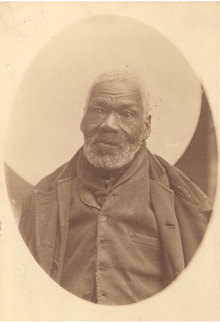
The next major migration of blacks into Nova Scotia occurred between 1813 and 1815. Black Refugees from the United States settled in many parts of Nova Scotia including Hammonds Plains, Beechville, Lucasville and Africville.
Canada was not suited to the large-scale plantation agriculture practised in the southern United States, and slavery became increasingly rare. In 1793, in one of the first acts of the new Upper Canadian colonial parliament, slavery was abolished. It was all but abolished throughout the other British North American colonies by 1800, and was illegal throughout the British Empire after 1834. This made Canada an attractive destination for those fleeing slavery in the United States, such as American minister Boston King.
Royal Acadian School
In 1814, Walter Bromley opened the Royal Acadian School which included many black students – children and adults – whom he taught on the weekends because they were employed during the week.[85] Some of the black students entered into business in Halifax while others were hired as servants.[86]
In 1836, the African School was established in Halifax from the Protestant Gospel School (Bray School) and was soon followed by similar schools at Preston, Hammond's Plains and Beech Hill.[87][88]
New Horizons Baptist Church
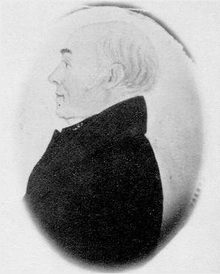
Following Black Loyalist preacher David George, Baptist minister John Burton was one of the first ministers to integrate black and white Nova Scotians into the same congregation.[89] In 1811 Burton's church had 33 members, the majority of whom were free blacks from Halifax and the neighbouring settlements of Preston and Hammonds Plains. According to historian Stephen Davidson, the blacks were "shunned, or merely tolerated, by the rest of Christian Halifax, the blacks were first warmly received in the Baptist Church."[89] Burton became known as "an apostle to the coloured people" and would often be sent out by the Baptist association on missionary visits to the black communities surrounding Halifax. He was the mentor of Richard Preston.
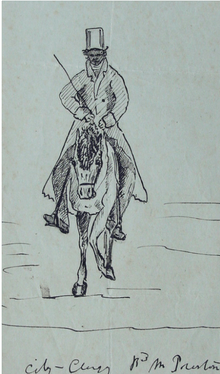
New Horizons Baptist Church (formerly known as Cornwallis Street Baptist Church, the African Chapel, and the African Baptist Church) is a baptist church in Halifax, Nova Scotia that was established by Black Refugees in 1832. When the chapel was completed, black citizens of Halifax were reported to be proud of this accomplishment because it was evidence that former slaves could establish their own institutions in Nova Scotia.[90] Under the direction of Richard Preston, the church laid the foundation for social action to address the plight of Black Nova Scotians.[91]
Preston and others went on to establish a network of socially active black baptist churches throughout Nova Scotia, with the Halifax church being referred to as the "Mother Church."[90] Five of these churches were established in Halifax: Preston (1842), Beechville (1844), Hammonds Plains (1845), and another in Africville (1849) and Dartmouth.[92] From meetings held at the church, they also established the African Friendly Society, the African Abolition Society, and the African United Baptist Association.
The church remained the centre of social activism throughout the 20th Century. Reverends at the church included William A. White (1919–1936) and William Pearly Oliver (1937–1962).
American Civil War
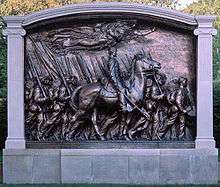
Numerous Black Nova Scotians fought in the American Civil War in the effort to end slavery. Perhaps the most well known Nova Scotians to fight in the war effort are Joseph B. Noil and Benjamin Jackson. Three Black Nova Scotians served in the famous 54th Regiment Massachusetts Volunteer Infantry: Hammel Gilyer, Samuel Hazzard, and Thomas Page.[93]
20th century
Coloured Hockey League
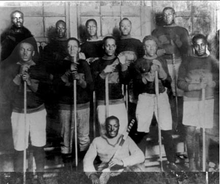
In 1894, an all-black ice hockey league, known as the Coloured Hockey League, was founded in Nova Scotia.[94] Black players from Canada's Maritime provinces (Nova Scotia, New Brunswick, Prince Edward Island) participated in competition. The league began to play 23 years before the National Hockey League was founded, and as such, it has been credited with some innovations which exist in the NHL today.[95] Most notably, it is claimed that the first player to use the slapshot was Eddie Martin of the Halifax Eurekas, more than 100 years ago.[96] The league remained in operation until 1930.
World War One
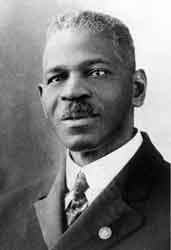
The No. 2 Construction Battalion, Canadian Expeditionary Force (CEF), was the only predominantly black battalion in Canadian military history and also the only Canadian Battalion composed of black soldiers to serve in World War I. The battalion was raised in Nova Scotia and 56% of battalion members (500 soldiers) came from the province. Reverend William A. White of the Battalion became the first black officer in the British Empire.
An earlier black military unit in Nova Scotia was the Victoria Rifles.
Nova Scotia Association for the Advancement of Coloured People
Led by minister William Pearly Oliver, the Nova Scotia Association for the Advancement of Coloured People was formed in 1945 out of the Cornwallis Street Baptist Church. The organization was intent of improving the standard of living for Black Nova Scotians. The organization also attempted to improve black-white relations in co-operation with private and governmental agencies. The organization was joined by 500 Black Nova Scotians.[97] By 1956, the NSAACP had branches in Halifax, Cobequid Road, Digby, Wegymouth Falls, Beechville, Inglewooe, Hammonds Plains and Yarmouth. Preston and Africville branches were added in 1962, the same year New Road, Cherrybrook, and Preston East requested branches.[98] In 1947, the Association successfully took the case of Viola Desmond to the Supreme Court of Canada.[99] It also pressured the Children's Hospital in Halifax to allow for black women to become nurses; it advocated for inclusion and challenged racist curriculum in the Department of Education. The Association also developed an Adult Education program with the government department.
By 1970, over one-third of the 270 members were white.[98]
Nova Scotia Human Rights Commission
Along with Oliver and the direct involvement of the premier of Nova Scotia Robert Stanfield, many black activists were responsible for the establishment of the Nova Scotia Human Rights Commission (1967).[100] Originally the mandate of the Commission was primarily to address the plight of Black Nova Scotians. The first employee and administrative officer of the Commission was Gordon Earle.
Black United Front
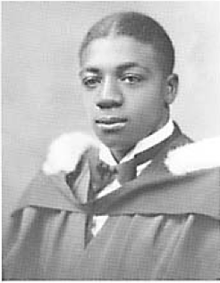
In keeping with the times, Reverend William Oliver began the Black United Front in 1969, which explicitly adopted a black separatist agenda.[101] The black separatist movement of the United States had a significant influence on the mobilization of the Black community in 20th Century Nova Scotia. This black separatist approach to address racism and black empowerment was introduced to Nova Scotia by Marcus Garvey in the 1920s.[102] Garvey argued that black people would never get a fair deal in white society, so they ought to form separate republics or return to Africa. White people are considered a homogenous group who are essentially racist and, in that sense, are considered unredeemable in efforts to address racism.
Garvey visited Nova Scotia twice, first in the 1920s, which led to a Universal Negro Improvement Association and African Communities League (UNIA) office in Cape Breton, and then the famous 1937 visit.[103] He was initially drawn by the founding of an African Orthodox Church in Sydney in 1921 and maintained contact with the ex-pat West Indian community. The UNIA invited him to visit in 1937.[102] (Garvey presided over UNIA regional conferences and conventions in Toronto, in 1936, 1937, and 1938. At the 1937 meeting he inaugurated his School of African Philosophy.)
Despite objections from Martin Luther King Jr., this separatist politics was reinforced again in the 1960s by the Black Power Movement and especially its militant subgroup the Black Panther Party.[104][105] Francis Beaufils (a.k.a. Ronald Hill) was a fugitive Black Panther facing charges in the U.S. who had found refuge in rural Nova Scotia.[105] The separatist movement influenced the development of the Halifax-based Black United Front (BUF). Black United Front was a Black nationalist organization that included Burnley "Rocky" Jones and was loosely based on the 10 point program of the Black Panther Party. In 1968, Stokely Carmichael, who coined the phrase Black Power!, visited Nova Scotia helping organize the BUF.[106][107]
Black Cultural Centre for Nova Scotia
Reverend William Oliver eventually left the BUF and became instrumental in establishing the Black Cultural Centre for Nova Scotia, which opened in 1983. The organization houses a museum, library and archival area. Oliver designed the Black Cultural Centre to help all Nova Scotians become aware of how black culture is woven into the heritage of the province. The Centre also helps Nova Scotians trace their history of championing human rights and overcoming racism in the province. For his efforts in establishing the four leading organizations in the 20th century to support Black Nova Scotians and, ultimately, all Nova Scotians, William Oliver was awarded the Order of Canada in 1984.
21st century
Organizations
Several organizations have been created by Black Nova Scotians to serve the community. Some of these include the Black Educators Association of Nova Scotia, African Nova Scotian Music Association, Health Association of African Canadians and the Black Business Initiative. Individuals involved in these and other organizations worked together with various officials to orchestrate the government apologies and pardons for past incidents of racial discrimination.
Africville Apology

The Africville Apology was delivered on February 24, 2010, by Halifax, Nova Scotia, for the eviction and eventual destruction of Africville, a Black Nova Scotian community.
Viola Desmond pardon
On April 14, 2010, the Lieutenant Governor of Nova Scotia, Mayann Francis, on the advice of her premier, invoked the Royal Prerogative and granted Viola Desmond a posthumous free pardon, the first such to be granted in Canada.[108] The free pardon, an extraordinary remedy granted under the Royal Prerogative of Mercy only in the rarest of circumstances and the first one granted posthumously, differs from a simple pardon in that it is based on innocence and recognizes that a conviction was in error. The government of Nova Scotia also apologised. This initiative happened through Desmond's younger sister Wanda Robson, and a professor of Cape Breton University, Graham Reynolds, working with the Government of Nova Scotia to ensure that Desmond's name was cleared and the government admitted its error.
In honour of Desmond, the provincial government has named the first Nova Scotia Heritage Day after her.
Nova Scotia Home for Colored Children apology
Children in an orphanage that opened in 1921, the Nova Scotia Home for Colored Children, suffered physical, psychological and sexual abuse by staff over a 50-year period. Ray Wagner is the lead counsel for the former residents who successfully made a case against the orphanage.[109] In 2014, the Premier of Nova Scotia Stephen McNeil wrote a letter of apology and about 300 claimants are to receive monetary compensation for their damages.[110]
Immigration
Since the immigration reforms of the 1970s, a growing number of people of African descent have moved to Nova Scotia. Members of these groups are often not considered a part of the distinct Black Nova Scotian community, although they may be perceived as such by wider society.
Top 5 immigrant ethnic origins for people of African descent in Nova Scotia:[2]
| Country of origin | Population 2016 |
|---|---|
| 480 | |
| 350 | |
| 230 | |
| 185 | |
| 185 | |
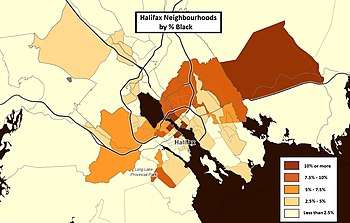
Settlements
Black Nova Scotians were initially established in rural settings, which usually functioned independently until the 1960s. Black Nova Scotians in urban areas today still trace their roots to these rural settlements. Some of the settlements include: Gibson Woods, Greenville, Weymouth Falls, Birchtown, East Preston, Cherrybrook, Lincolnville, Upper Big Tracadie, Five Mile Plains, North Preston, Tracadie, Shelburne, Lucasville, Beechville, and Hammonds Plains among others. Some have roots in other black settlements located in New Brunswick and Prince Edward Island including Elm Hill, New Brunswick, Willow Grove (Saint John, NB) and The Bog (Charlottetown, PEI).
Prominent black neighbourhoods exist in most towns and cities in Nova Scotia including Halifax, Truro, New Glasgow, Sydney, Digby, Shelburne and Yarmouth. Black neighbourhoods in Halifax include Uniacke Square and Mulgrave Park. The ethnically diverse Whitney Pier neighborhood of Sydney has a significant black population, first drawn there by the opening of the Dominion Iron and Steel Company steel mill in the early 20th century.
List of areas with Black populations higher than provincial average
- Halifax (3.8%)
Over 10,000
- Dartmouth North (9.7%)
- Whitney Pier (7.7%)
- Clayton Park (7.5%)
- Spryfield (7.2%)
- Cole Harbour (7%)
- Dartmouth (6.5%)
- Rockingham (5%)
- Truro (3.9%)
- West Hants County (2.4%)
Over 5,000
- Preston (23%)
- North End Halifax (21%)
- West End Halifax (8.3%)
- Yarmouth (7.8%)
- Lake Echo (6.1%)
- Digby (municipal district) (4.5%)
- Amherst (3.9%)
- New Glasgow (3.9%)
- New Minas (3.8%)
Over 1,000
- North Preston (99%)
- East Preston (80%)
- Upper Hammonds Plains (17.9%)
- South End (New Glasgow) (17%)
- Three Mile Plains & Five Mile Plains (15.5%)
- Shelburne (town) (13.8%)
- Acaciaville, Jordantown & Marshalltown (11.1%)
- Weymouth & Weymouth Falls area (9.2%)
- Beechville (9.5%)
- Digby (town) (8.4%)
- Lucasville (7.8%)
- Guysborough (7.6%)
- Lower Truro (6.3%)
- Liverpool (3%)
Notable people
Politicians
- Wayne Adams
- Yvonne Atwell
- Wanda Thomas Bernard, Canadian Senator
- Mayann Francis, first black woman Lieutenant Governor of Nova Scotia
- Daurene Lewis, first black woman mayor in Canada; recipient of Order of Canada
- Donald Oliver
- Calvin Ruck, recipient of Order of Canada
- Bill White
Artists
- Gary Beals, R&B musician
- Walter Borden, actor
- George Boyd, playwright/journalist
- George Elliott Clarke, poet and playwright
- Kaleb Simmonds, R&B musician
- Faith Nolan, folk and jazz musician
- Rob "Blye" Paris of Citizen Kane, rapper
- Portia White, operatic contralto
Athletes
- Marjorie Bailey, sprinter
- George Dixon, boxer
- Kirk Johnson, boxer
- Rocky Johnson, wrestler, father of Dwayne "The Rock" Johnson
- Sam Langford, boxer
- Lindell Wigginton, Basketball Player
- Bill Riley, hockey player
- Wayne Smith, football player
- Chris Johnson, basketball player [111]
- Tyrone Williams, football player
- Pokey Reddick, hockey player
Veterans
- William Hall, Victoria Cross laureate
- Benjamin Jackson, sailor and Civil War soldier
- Jeremiah Jones, World War I soldier
- Joseph B. Noil, sailor and Medal of Honor recipient
- Isaac Phills, World War I soldier and Order of Canada recipient
- William A. White, officer in the British Army in World War I
- Three Black Nova Scotians served in the American Civil War in the famous 54th Regiment Massachusetts Volunteer Infantry: Hammel Gilyer, Samuel Hazzard, and Thomas Page.[93]
Activists
- Carrie Best
- Viola Desmond
- Burnley "Rocky" Jones, political activist
- Joan Jones, political activist, Business-woman
- William Pearly Oliver
- Calvin W. Ruck, author of The Black Battalion
Other
- Rose Fortune, considered first black woman police officer in Canada
- James Robinson Johnston, lawyer and community leader
- Beverly Mascoll, businesswoman
- Maurice Ruddick (1912–1988), citizen of the year for his role in the 1958 Springhill Mining Disaster
- Corrine Sparks, the first African Nova Scotian to be appointed to the judiciary and first African Canadian female to serve on the bench.[112][113]
See also
- Thomas Peters, Black Loyalist who settled Nova Scotia
- The Book of Negroes (2007), a novel based on the historic document of the same name
- Poor Boy's Game
- Speak It! From the Heart of Black Nova Scotia
- Black Cop
Sources
- "Website Update – Nova Scotia Archives". novascotia.ca.
- Census Profile, 2016 Census Statistics Canada. Accessed on May 1, 2018.
- Confederation's Casualties: The "Maritimer" as a Problem in 1960s Toronto, Acadiensis. Retrieved 2014-02-04.
- Black history in Toronto Archived 2014-02-02 at the Wayback Machine, City of Toronto. Retrieved 2014-02-04.
- "About Nova Scotia – novascotia.ca". www.novascotialife.com.
- "Halifax's Black Loyalists – Halifax Nova Scotia". highway7.com.
- Racism's long history in quiet East Coast towns The Globe and Mail. Accessed on February 23, 2016.
- (Organization), Associates of Dr Bray (24 September 2017). "An Account of the Designs of the Associates of the late Dr. Bray, with an abstract of their proceedings" – via Google Books.
- "Nova Scotia Department of Education – Learning Resources and Technology". lrt.ednet.ns.ca.
- https://archive.org/details/educationinnova00thibgoog/page/n104
- Sheri Borden Colley, "Black artists with N.S. roots want their Métis ancestry recognized". CBC News Nova Scotia, February 16, 2018.
- Shaina Luck, "Afro-Metis musicians hope to inspire others to learn more about heritage". CBC News Nova Scotia, February 18, 2018.
- Canada, Library and Archives. "1881 Census - Library and Archives Canada".
- Services, Government of Canada, Public Services and Procurement Canada, Integrated Services Branch, Government Information Services, Publishing and Depository. "Ninth census of Canada, 1951 = Neuvième recensement du Canada : CS98-1951-PDF - Government of Canada Publications - Canada.ca". publications.gc.ca.
- "File not found | Fichier non trouvé". www12.statcan.gc.ca.
- "Website Update – Nova Scotia Archives". novascotia.ca.
- Kenneth Donovan, "Slaves and Their Owners in Ile Royale, 1713–1760", Acadiensis, XXV, 1 (Autumn 1995), pp. 3–32.
- "Slavery Tour opens at Fortress of Louisbourg: Interpreters of African descent lead tourists through historic site". CBC News Posted: July 30, 2009
- Kenneth Donovan, "A Nominal List of Slaves and Their Owners in Ile Royale, 1713–1760", Nova Scotia Historical Review, 16, 1 (June 1996), pp. 151–62.
- By the late 1750s Ile Royale's population, including soldiers, approached 10,000 people. See A. J. B. Johnston, "The Population of Eighteenth-Century Louisbourg", Nova Scotia Historical Review, 11,2 (December 1991), pp. 75–86.
- Kenneth Donovan, "Slaves and Their Owners in Ile Royale, 1713–1760", Acadiensis, XXV, 1 (Autumn 1995), p. 4
- Donovan, p. 5
- The census of 1767 indicates that there were 13,374 people in what is now the Maritimes, 104 of them were black (Census dated January 1, 1767 as cited by John N. Grant. "Black Nova Scotians". Nova Scotia Department of Education. 1980. p. 7); Also see Bruce Furguson. Public Archives of Nova Scotia, RG 1, Volume 443, No. 1
- (See Archives)
- Of the 3000 inhabitants of the city in 1750, 400 were labelled "servants", some of whom were slaves. The Archives of Nova Scotia asserts that these 400 servants were slaves. Given that most of the immigrants to Halifax came directly from England and were primarily poor, the possibility of them having as many as 400 slaves is remote. Further, the assertion that the 400 servants were black in 1749 is highly improbable given only 54 Blacks were in Halifax in 1767.
- Albemaarle St. is named after George Keppel, 3rd Earl of Albemarle
- pp. 71-72
- "Website Update – Nova Scotia Archives". novascotia.ca.
- (See Griffith)
- https://archive.org/details/cihm_20697
- History of Methodism, p. 174
- Jack C. Whytock. "The Huntingdonian Missionaries to Nova Scotia and New Brunswick, c. 1785-1792" , Haddington House
- Jack C. Whytock. Historical Papers 2003: Canadian Society of Church History. Edited by Bruce L. Guenther, p.154. (pdf on line)
- The Black Loyalists: The Search for a Promised Land in Nova Scotia and ... By James W. St. G. Walker
- St. Paul's Cemetery/ Old Burial Ground records (as transcribed in the Death, Burials & Probate of Nova Scotians
- C. B. Fergusson, "A Documentary Study of the Establishment of the Negroes in Nova Scotia Between the War of 1812 and the Winning of Responsible Government, "Public Archives of Nova Scotia, Halifax, Publication no. 8,1948, p. 1.
- Mastering Christianity: Missionary Anglicanism and Slavery in the Atlantic World by Travis Glasson
- (Whitfield, p. 43)
- (Pachai, p.11-12).
- (Pachai, p.21)
- (see Pachai, p. 23)
- "Website Update – Nova Scotia Archives". www.gov.ns.ca.
- "Website Update – Nova Scotia Archives". www.gov.ns.ca.
- Remembering Black Loyalists, Black Communities in Nova Scotia Archived 2007-07-18 at the Wayback Machine
- Judith Fingard, "Attitudes towards the Education of the Poor in Colonial Halifax", p. 17.
- "Jack C. Whytock. The Huntingdonian Missionaries to Nova Scotia and New Brunswick, c. 1785–1792" (PDF).
- Jack C. Whytock. Historical Papers 2003: Canadian Society of Church History. Edited by Bruce L. Guenther, p.154.
- "Biography – HARTSHORNE, LAWRENCE – Volume VI (1821-1835) – Dictionary of Canadian Biography".
- "Find a Grave".
- "Website Update – Nova Scotia Archives". novascotia.ca.
- Barry Cahill. Stephen Blucke: The Perils of Being a "White Negro" in Loyalist Nova Scotia. Nova Scotia Historical Review, p. 129
- William Weir (2004). The Encyclopedia of African American Military History. Prometheus Books. pp. 31–32.
- "Birchtown", Place-Names and Places of Nova Scotia Nova Scotia Archives and Records Management, p. 67
- Robertson, Jesse (January 20, 2015). "The Shelburne Race Riots". Encyclopedia of Canada. Retrieved August 2, 2017.
- John N. Grant. Black Nova Scotians. Nova Scotia Department of Education. 1980. p. 13
- Calgary, University of; Laval, Université. "Our Roots – Page view".
- "CDC: Black Loyalists". blackloyalist.com.
- Ruth Whitehead. Black Loyalists, 2013. p. 172
- John Grant. Dempsey Jordan: Teacher, Preacher, Farmer, Community Leader, and Loyalist Settler at Guysborough and Tracadie. Royal Nova Scotia Historical Society Journal. Vol. 14, 2011, pp. 78–79
- "Big Tracadie". people.stfx.ca. Archived from the original on 2016-03-03. Retrieved 2015-01-14.
- "Website Update – Nova Scotia Archives". novascotia.ca.
- Riddell, William Renwick (1 July 1920). "Slavery in the Maritime Provinces". The Journal of Negro History – via Internet Archive.
- Harvey Amani Whitfield. The Struggle over slavery in the Maritime Colonies. Acadiensis. 2002. No. 2.
- Harvey Amani Whitfield. North to Bondage: Loyalists Slavery in the Maritimes. UBC. 2016.
- "MacGREGOR (McGregor), JAMES DRUMMOND", Dictionary of Canadian Biography.
- Alan Wilson. Highland Shepherd: James MacGregor, Father of the Scottish Enlightenment in Nova Scotia. University of Toronto Press, 2015, p. 75.
- Robin Winks as cited by Alan Wilson. Highland Shepherd: James MacGregor, Father of the Scottish Enlightenment in Nova Scotia. University of Toronto Press, 2015, p. 79.
- Bridglal Pachai & Henry Bishop. Historic Black Nova Scotia. 2006. p. 8.
- John Grant. Black Refugees. p. 31.
- Robin Winks. Blacks In Canada, p. 102.
- Biography at the Dictionary of Canadian Biography Online
- "Celebrating the 250th Anniversary of the Supreme Court of Nova Scotia". courts.ns.ca.
- Opinions of several gentlemen of the law, on the subject of negro servitude, in the province of Nova-Scotia. 1802.
- Cannon, Richard (24 September 2017). "Historical record of The Twentieth, or, The East Devonshire Regiment of Foot [microform] : containing an account of the formation of the regiment in 1688, and of its subsequent services to 1848". London : Parker, Furnivall, & Parker – via Internet Archive.
- Mavis Campbell, The Maroons of Jamaica 1655-1796: a History of Resistance, Collaboration & Betrayal (Massachusetts: Bergin & Garvey, 1988), pp. 241-2.
- Michael Siva, After the Treaties: A Social, Economic and Demographic History of Maroon Society in Jamaica, 1739-1842, PhD Dissertation (Southampton: Southampton University, 2018), pp. 144-6.
- John N. Grant. "Black Immigrants into Nova Scotia, 1776–1815". The Journal of Negro History. Vol. 58, No. 3 (July 1973), pp. 253–270.
- Robin Winks, The Blacks in Canada: A History (McGill Press, 1997), pp. 78-93.
- "Archived copy". Archived from the original on 2006-04-30. Retrieved 2012-09-14.CS1 maint: archived copy as title (link)
- https://archive.org/details/britishcoloniest07mart/page/178?q=%22gold+coast%22+winniett
- "Website Update – Nova Scotia Archives". novascotia.ca.
- "Website Update – Nova Scotia Archives". novascotia.ca.
- Thomas Akins. History of Halifax, p. 174.
- Akins, p. 159.
- "Website Update – Nova Scotia Archives". novascotia.ca.
- "p.18" (PDF).
- Burton, John. Dictionary of Canadian Biography.
- "Biography – PRESTON, RICHARD – Volume VIII (1851–1860) – Dictionary of Canadian Biography".
- "Shaping a Community: Black Refugees in Nova Scotia – Pier 21". www.pier21.ca.
- "Website Update – Nova Scotia Archives". novascotia.ca.
- Tom Brooks "All Men are Brothers", 1995. LWF Publications. historical quarterly, Lest We Forget.
- Black hockey hall of fame proposed for Dartmouth, CBC Sports, August 26, 2006. Accessed on August 19, 2012.
- birthplaceofhockey.com Archived 2006-11-05 at the Wayback Machine, Garth Vaughan © 2001. Accessed on August 19, 2012.
- Martins, Daniel, Hockey historian credits black player with first slapshot Archived 2012-03-23 at the Wayback Machine, CanWest News Service, January 31, 2007. Accessed on August 19, 2012.
- Colin A. Thomson. Born with a call: a biography of Dr. William Pearly Oliver, C.M., p. 79
- Thomson, p. 81
- Thomson p. 93
- Andrew MacKay. First Chairperson. In Bridglal Pachai (ed.), Nova Scotia Human Rights Commission: 25th Anniversary. 1992, p. 19.
- Thomson, p. 121.
- Jon Tattrie. Sunday Chronicle-Herald, November 29, 2009 Archived August 14, 2016, at the Wayback Machine
- Paul MacDougall, "Marcus Garvey and Nova Scotia: Birth of a Movement, Birth of a Religion, Birth of a Church". Shunpiking Magazine. Black History & African Heritage Supplement. February/March 2000, Volume 5, Number 32. In 1937 Marcus Garvey visited Africville and gave a speech at the African Methodist Church, a speech Bob Marley referenced in the lyrics to "Redemption Song".
- Martin Luther King Jr. Where do we go from here: Community or chaos? (1968)
- "Black Panther's story is also story of N.S. in '70s". 14 April 2014. Archived from the original on 9 September 2018. Retrieved 10 February 2013.
- Tim Mitchell, "Black rights advocate refuses to quit", The Mail Archive, February 19, 2009.
- Thomson, p. 137.
- Carlson, Kathryn Blaze (April 14, 2010). "'Canada's Rosa Parks,' Viola Desmond, posthumously pardoned". National Post. Archived from the original on August 26, 2010. Retrieved April 14, 2010.
- CBC news "Home for Colored Children victims tell court about rape, beatings", July 7, 2014.
- CBC news "Home for Colored Children apology: N.S. says sorry to ex-residents", October 10, 2014.
- "Chris Johnson". basketball.realgm.com. Retrieved November 28, 2019.
- "African Heritage Month Narratives - Judge Corrine Sparks". African Nova Scotian Affairs. Province of Nova Scotia, Nova Scotia Communities, Culture and Heritage. Retrieved 5 December 2019.
Corrine Sparks is the first African Nova Scotian to be appointed to the judiciary and first African Canadian female to serve on the bench.
- Tattrie, Jon (February 5, 2017). "How a 'national crisis' showed the value of black judges". CBC/Radio-Canada. CBC News. Retrieved 5 December 2019.
Judge Corrine Sparks — Nova Scotia's first black judge and the first black woman judge in Canada
Further reading
- History of the Maroons. 1803
- William Renwick Riddell. Slavery in the Maritime Provinces. The Journal of Negro History, Vol. 5, No. 3 (July 1920), pp. 359–375
- Catherine Cottreau-Robins, "Timothy Ruggles – A Loyalist Plantation in Nova Scotia, 1784–1800". Doctorate Thesis. Dalhousie University, 2012
- Williams, Dawn P. (2006), Who's Who in Black Canada, Volume 2, D.P. Williams, ISBN 0-9731384-2-4
- Allen Robertson, "Bondage and Freedom: Apprentices, Servants and Slaves in Colonial Nova Scotia"; Collections of the Nova Scotia Historical Society. Vol. #44 (1996); pp. 13.
- Wilson Head. "Discrimination Against Blacks in Nova Scotia: The Criminal Justice System" (1989).
- John Grant, "Black Immigration into Nova Scotia". Journal of Negro History, 1973
- The African in Canada; The Maroons of Jamaica and Nova Scotia (1890)
- Papers relative to the settling of the Maroons in His Majesty's province of Nova Scotia (1798)
- A brief history of the coloured Baptists of Nova Scotia and their first organization as churches, A.D. 1832 (1895)
